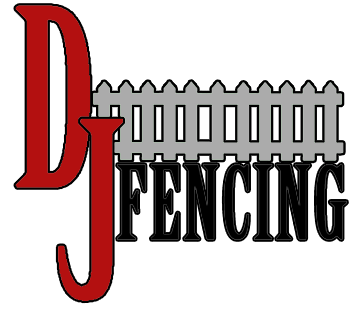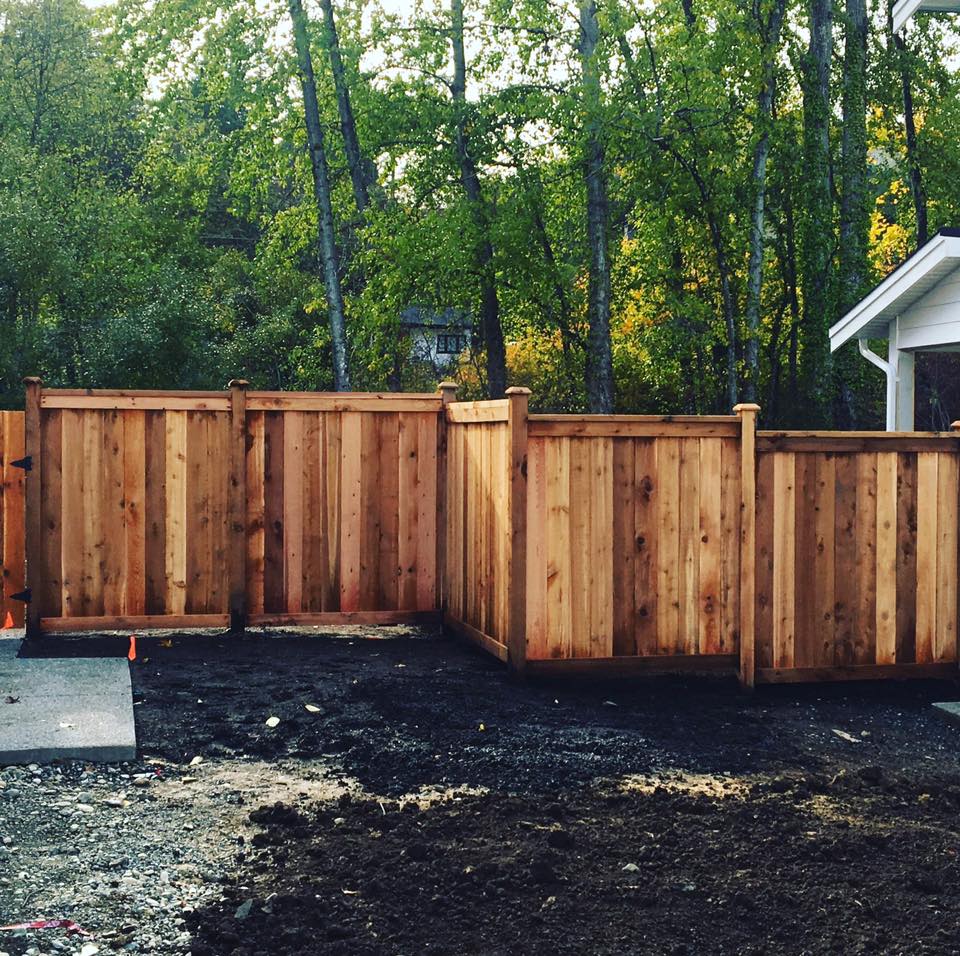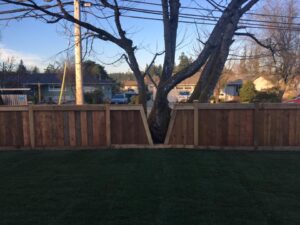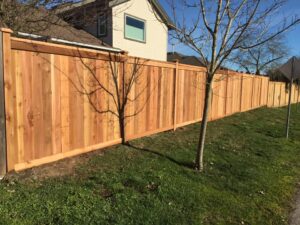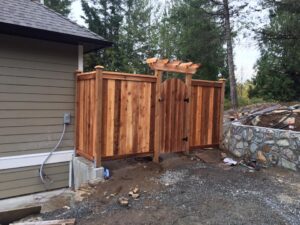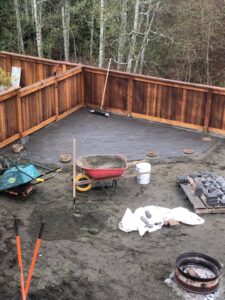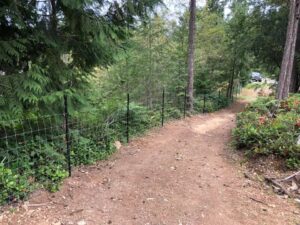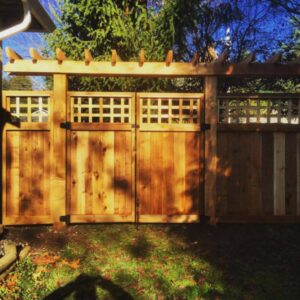If your fence has started warping or cracking, you’re definitely not alone. Wood fences, especially, take a beating from the weather. Rain, sun, and changing temperatures can all cause the boards to twist or split over time. Add poor installation or skipped maintenance, and things go downhill fast. The good news? You can actually prevent most of this damage with a few simple habits.
Quick Takeaways
- Moisture makes wood swell and shrink — sealants help keep that in check.
- Extreme heat, cold, or humidity can cause materials to warp or crack.
- Crooked or shallow posts lead to long-term structural problems.
- Regular checkups help catch small issues before they become expensive ones.
- Simple upkeep — trimming plants, cleaning, and re-sealing — keeps your fence looking new for years.
Know What Your Fence Is Made Of
Different fence materials age in different ways. Wood, vinyl, metal, and composites all handle the weather differently.
Wood looks great but soaks up moisture like a sponge. Vinyl won’t rot, but it can turn brittle when temperatures drop. Metal stands strong, but without a proper coating, it’ll rust.
Knowing what kind of fence you have helps you treat it the right way — whether that’s sealing, cleaning, or adding a protective finish. And when you inspect it regularly, you’ll spot trouble before it turns into a big repair job.
How Weather Beats Up Your Fence
Weather changes everything — literally. When it’s hot, materials expand. When it’s cold, they contract. That push and pull leads to cracks, bends, and even broken boards.
Humidity makes wood swell, while dry spells pull the moisture out, leaving it warped. Strong winds can loosen posts if they weren’t set deep enough. And constant sunlight eats away at paint and stain, exposing the raw wood underneath.
The fix? Keep an eye on it. A little maintenance each season helps your fence handle whatever the weather throws at it.
Moisture: Your Fence’s Worst Enemy
Water is wood’s biggest problem. When boards get wet, they swell. When they dry out, they shrink. Do that cycle a hundred times, and it’s no wonder you see cracks.
Sealants are your best defense. They keep moisture out while still letting the wood breathe. Watch for warning signs like soft spots, mold, or gray discoloration — they mean moisture’s already doing damage. A quick touch-up or re-seal can save you a full replacement later.
Installation Mistakes That Cause Problems
A fence that’s not built right won’t last, plain and simple.
If posts aren’t deep enough, or if the panels aren’t lined up properly, stress builds up unevenly. Over time, that leads to bowing and splitting. Using the wrong screws or nails can also make boards loosen faster.
Taking the time to get it level and sturdy at the start saves years of frustration — and repairs.
Why Maintenance Matters So Much
A lot of fences fail simply because no one’s keeping an eye on them.
Loose boards, rusted hardware, peeling paint — these things start small. Ignore them, and you’ll soon have full-blown warping, cracks, or even sections falling over.
Check your fence twice a year — spring and fall are good times. Tighten what’s loose, recoat what’s fading, and clean off any dirt or moss. A little effort now keeps your fence looking solid and saves you money in the long run.
Sealing and Treating Your Fence the Right Way
Sealants and stains do more than make your fence look good — they protect it.
Go for a quality product that soaks into the wood rather than just sitting on top. Clean the surface first (pressure washing or light sanding works well) so the sealant sticks properly.
Most fences need a fresh coat every two or three years. It’s a weekend job that pays off big time in protection and appearance.
Picking the Right Fence for Your Weather
Where you live matters more than you think.
In coastal areas, salty air and moisture mean you’ll want corrosion-resistant materials. In hot, dry climates, UV protection is key. If you live somewhere that freezes in winter, composite or treated wood will handle temperature swings better.
Facing your fence away from harsh winds and planning for good drainage can also make a big difference.
How Long Different Materials Last
Every fence material has its pros and cons.
Vinyl handles wet weather well but can crack in cold climates. Pressure-treated wood holds up against insects and decay. Metal options like aluminum or steel are strong, but they’ll still need protective coatings to avoid rust.
Choose something tested for your region, and you’ll get years more life out of your fence.
Easy Maintenance Habits That Work
Even the toughest materials need care.
Look for signs of warping, cracking, or rust a couple of times a year. In damp climates, pick rust-resistant hardware or treated lumber. Cold weather? Try composite panels that won’t split easily.
A simple routine helps — clean in the spring, seal in the fall, and keep plants trimmed so they don’t trap moisture against the wood.
Warning Signs You Shouldn’t Ignore
You don’t need to be a pro to spot early damage.
Look for rotted posts, cracked boards, or nails backing out. Watch for shifting soil too — that can throw off your fence’s balance.
Catching these issues early means you can fix one board instead of rebuilding an entire section.
Repair Tips That Actually Work
Once you find a problem, fix it before it spreads.
Small cracks? Fill them with wood filler or epoxy. Warped boards can sometimes be reshaped using moisture or gentle heat. Then sand and reseal the area to protect it from more damage.
Keep your fence clean, maintain drainage around it, and cut back anything growing too close. Do that, and your fence will stay strong for years.
FAQs
How often should I check my fence?
Twice a year is ideal. If you live somewhere with heavy rain or extreme temperatures, check more often.
Can I just paint my fence for protection?
Yes, as long as you use outdoor paint that blocks UV rays and moisture. It adds color and protection in one go.
What are signs of bad installation?
Uneven panels, gaps, or a fence that leans or sags right away usually mean the posts weren’t set deep enough or aren’t aligned properly.
Treated or untreated wood — which is better?
Treated wood. It lasts longer and fights off rot, insects, and moisture. Untreated wood looks nice but breaks down faster.
How do I know if it’s time to reseal?
If the color’s fading, the surface feels rough, or water no longer beads up when it rains, it’s time for another coat.
Final Thoughts
A fence doesn’t fall apart overnight — it happens slowly, from moisture, sunlight, and a little neglect. If you keep up with inspections, sealing, and quick fixes, your fence will stay solid and good-looking for years.
Take care of it now, and it’ll keep doing its job — marking your space, keeping things private, and looking great while it does.
